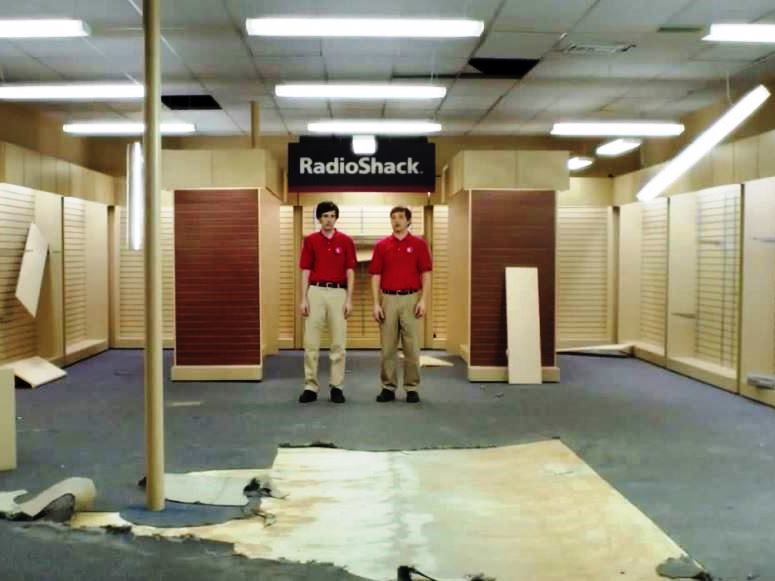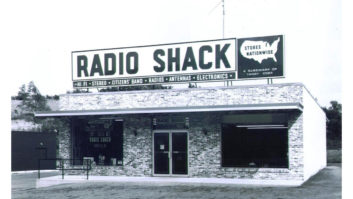
FORT WORTH, TEXAS – RadioShack’s humble beginnings as a small, 1920s Boston ham radio shop and mail-order business belie its later role as an American retail icon with 7,000 stores and a bevy of innovations under its belt, most notably the clunky TRS-80, acclaimed as the first mass-marketed, fully assembled personal computer.
Along the way it served as a cultural touchstone as consumers migrated from CB radios and eight-track tape decks to mobile phones and satellite dishes, all the while providing personalized, local service and arcane accessories on a mass scale – a business model that would prove unsustainable in a low-margin digital world.
RadioShack arguably reached its zenith under CEO Len Roberts, who presaged Best Buy’s branded store-within-a-store strategy by more than a decade, but also sowed the seeds of its cellular Achilles heel.
In the ensuing years the company began a long, painful descent, as tracked by TWICE’s Top 100 CE Retailers reports. Hardware sales fell 31 percent between 2004 and 2013 as the chain shuttered 42 percent of its store base, and its standing in our rankings dropped from fifth to eighth place.
What the reports don’t reflect was the rising rush of red ink, which prompted a merry-go-round of chief executives, draconian budget cuts and an even tighter grip on its cellular lifeline.
By the time final CEO Joe Magnacca took the reins in 2013, the dye had already been set and there was neither enough time nor money for his ambitious turnaround plans to gain traction. Instead, RadioShack filed for bankruptcy protection in the hopes of living on as a sub-brand of Sprint in 2,000 of its best and last remaining stores.
A RadioShack Timeline
1919: Two friends start the Hinckley-Tandy Leather Company in Fort Worth, Texas, supplying leather shoe parts and supplies to repair shops.
1921: Two brothers open the first “Radio Shack” in Boston. The small retail and mail-order business supplied ship radio equipment and “ham” radios, and was named for the small wooden structure onboard ships that housed the radio equipment.
1947: Radio Shack opens the first audio showroom to feature speakers, amplifiers, turntables and phonograph cartridges. Also that year, Charles D. Tandy joins the family business and would soon begin to chart a new direction for the company’s expansion.
1963: Tandy acquires Radio Shack
1972: Sells its first all-electronic calculator.
1977: Radio Shack introduces the first mass-marketed, fully assembled personal computer, the TRS-80, with an operating system built by Bill Gates.
1981: John Roach named CEO.
1984: Radio Shack sells its first mobile phone.
1985: Begins selling satellite TV systems and service.
1992: Launches Incredible Universe, its doomed big-box chain.
1999: Fast-food veteran Len Roberts named CEO; develops cellular, Internet and satellite subscription services and branded in-store shops.
2000: Tandy changes its name to RadioShack, drops private-label Realistic and Optimus brands
2004: Launches in-store wireless kiosk service for big-box retailers.
2006: Roberts’ successor David Edmondson resigns for misstating college background. Replaced by longtime McDonald’s exec Claire Babrowski, who in turn is succeeded by Kmart veteran Julian Day, a turnaround specialist known for aggressive cost-cutting.
2011: Verizon rejoins RadioShack’s wireless ranks, adding to its over-reliance on cellular. Day retires, succeeded by president/chief financial officer Jim Gooch.
2012: Gooch resigns amid mounting losses, succeeded by chief financial officer Dorvin Lively as acting CEO.
2013: Walgreens exec Joe Magnacca named CEO; develops turnaround plan that includes new store design, re-merchandised assortment and fresh marketing.
2014: Chain mounts a notable comeback campaign during Super Bowl XLVIII that pokes fun at its stodgy image, but sales remain soft and losses widen. Repeated requests by Magnacca to close 1,100 underperforming stores are nixed by term lender Salus.
2015: Company receives second default notice from Salus following poor holiday season; trading suspended on New York Stock Exchange; files for Chapter 11 bankruptcy protection












